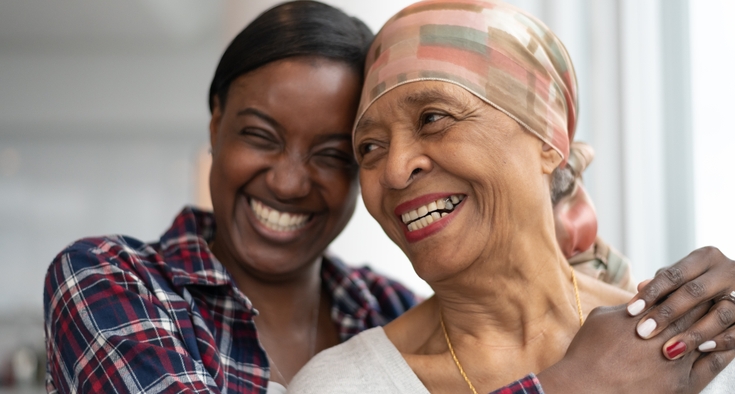Editor's note: Virginia Serruto is a Novant Health physical therapist.
When cancer or cancer treatment results in lymphedema, patients want to know how they can deal with the uncomfortable swelling – and feel more like themselves.
There’s good news: It’s possible both to reduce the risk for lymphedema and to address it if it happens. And a specialized team of Novant Health physical therapists is ready with support and treatments to make this part of the cancer journey a little easier.
Lymphedema, a swelling caused by lymphatic fluid building up in the tissues, can happen when the lymphatic system is damaged, either by the cancer itself or cancer treatment, such as surgery or radiation. When lymph nodes or lymph vessels are damaged or removed, the result can be swelling and a feeling of heaviness or tightness.
Before cancer surgery or radiation, there are things you can do to lower your risk of developing lymphedema.
They include:
Find the cancer care you deserve
While lymphedema is often an unavoidable side effect of cancer treatments, there are ways to treat this condition. Novant Health is pleased to offer a team of specialized physical therapists, known as certified lymphedema therapists (CLT), who can help address cancer-related swelling. Just ask anyone on your medical team about a referral if you are interested.
The gold standard treatment for lymphedema is a comprehensive approach known as complete decongestive therapy or CDT. CDT consists of four components.
- Manual lymphatic drainage (MLD) – gentle massage techniques to stimulate lymph flow
- Compression therapy – using bandages or compression garments (sleeves, gloves, etc.) to reduce swelling and support lymphatic drainage
- Exercise – specific movements to enhance lymphatic circulation and improve muscle pump function
- Skin care – keeping your skin healthy and hydrated and preventing infections
Your lymphedema therapist can also provide education, discuss concerns and help you manage lymphedema in ways that optimize health and function. Our goal will be to improve your ability to participate in everyday activities and live life beyond cancer.
Want to know more?
To learn more about health habits and lymphedema risk reduction visit the National Lymphedema Network’s website.
Classes available
Do you have questions about lymphedema? What is your risk of developing it? Who needs compression garments?
Join our certified lymphedema therapists for a live, online session to learn more about lymphedema risks and management.
Classes are held in a live virtual format, so you can participate from anywhere you have internet access. A camera is recommended for a full experience.
Two more classes for 2024
o Sept. 26
o Nov. 14
More about the lymphatic system
The lymphatic system is a vital part of the circulatory system. It helps maintain fluid balance in the body, it supports our immune function, and helps us absorb nutrients.
The lymphatic system is made up of lymph vessels and lymph nodes. Lymph vessels are similar to blood vessels, but carry lymphatic fluid instead of blood. Lymph nodes are small, bean-shaped organs located along the lymphatic vessels. They act as filters for lymph fluid. Much like a recycling center filters through plastic, glass, cardboard, etc., the lymph nodes filter lymphatic fluid, sorting through water, proteins, other molecules and pathogens, like bacteria and viruses.
The lymphatic system also plays a crucial role in our immune function by fighting off and destroying abnormal cells. Ultimately, the lymphatic system collects and transports fluid, filters and cleans that fluid, and returns it back to the heart to reenter circulation – where the whole process can begin again.









